Angina is an acute infectious disease. It belongs to the group of respiratory tract infections. Symptoms of angina can be high fever, inflammatory changes in the tonsils, intoxication of the body and inflammation of the regional lymph nodes. Angina is a fairly common disease. According to statistics, in children this disease is diagnosed in 75% of cases.
Contents
- Causes of angina in children
- Varieties of angina in children. How many children usually have angina?
- Angina: first aid to a child. How to treat recurrent angina?
- What antibiotics should I give a baby with a sore throat?
- Treatment of purulent sore throat in a child is medicated
- Treatment of fungal sore throat in a child with pills and injections
- Treatment of mononucleic angina in children is medically
- Treatment of catarrhal sinus in children
- Tablets and injections of herpetic sore throat
- How to cure different types of children's sore throat medications: advice and feedback
- Video. Angina in children. Treatment of angina
Causes of angina in children
The name of this disease we owe the ancient Greeks. They called the word "angina" all diseases associated with impaired swallowing and breathing. Ango( the word from which angina originated) from Greek is translated as choke and squeeze. But, today this word is only called tonsillitis. That is inflammation of the tonsils and tonsils.
The tonsils are located in the pharynx and oral cavity. They are lymph nodes. That is, the original "filters".Their function is to cleanse the lymph and destroy the microbes, bacteria and viruses that have got into the body.
But, with such "cleaning" of the body, lymph nodes can cope only if the amount of harmful substances does not exceed a certain mark. Once they are above a certain level, the lymph node ceases to cope and becomes inflamed. In this case, pathogenic bacteria enter the lymph node and displace it from lymphocytes - the cells of the immune system that produce antibodies.
This lasts 3-4 days. Then the reverse process occurs, and the body returns the previously lost lymph nodes.
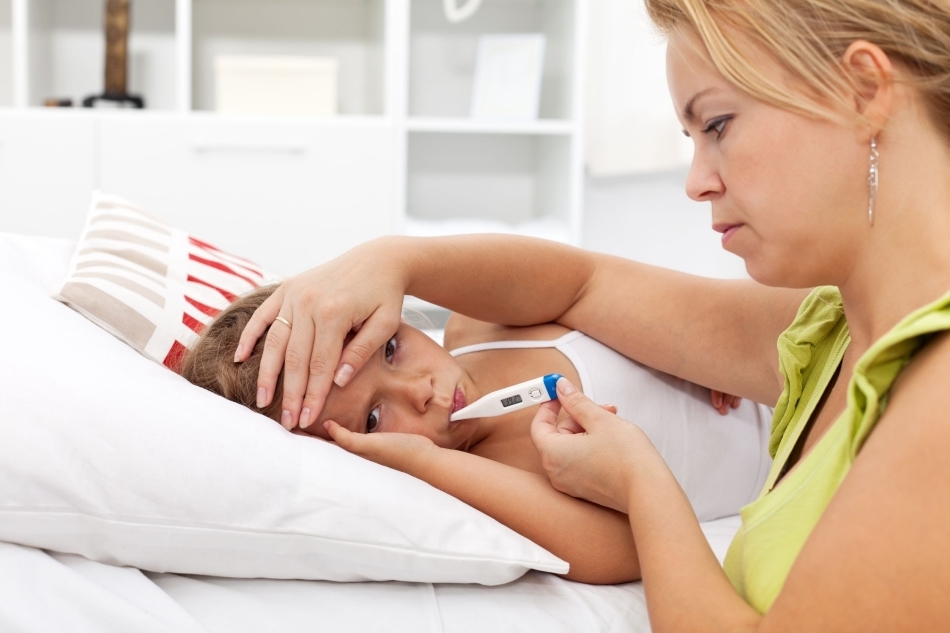 High temperature in a child
High temperature in a child Stigmata in children are streptococci, staphylococci and adenoviruses. According to statistics, the main causative agent of this disease in children is beta-hemolytic streptococcus group A.
To date, it is common to distinguish three main causes of the disease:
- The overall decrease in immunity of the body. Most often occurs as a result of hypothermia
- Transmission of a pathogen from a diseased to a healthy child
- Exacerbation of chronic tonsil inflammation
Varieties of angina in children. How many children usually have angina?
There are several types of angina that have their specific symptoms:
Catarrhal. This type of sore throat is rare in children. The disease begins acutely. There is dry mouth, pain when swallowing and burning in the throat. At the same time, the temperature is practically absent.
Inflamed tonsils are covered with a white coating. There may be headache, weakness and apathy. It takes 3-5 days.
Follicular. This type of angina develops very quickly. Usually from infection to the first symptoms do not pass more than a day. The temperature rises to 39 degrees. When swallowing, pain is noted, which is given in the ear. Salivation increases. Sometimes a child may vomit. On tonsils can appear yellowish points, which after three days turn into wound. After a week, the disease recedes.
Lacunar. Similar in symptom type of angina with the above-described disease. But, many symptoms of this disease appear brighter. In case of complications, the disease lasts more than a week.
Fibrous. Another type of angina similar to follicular. But, unlike it, when this type of angina is manifested, glands are covered with whitish films. To distinguish this type of angina from diphtheria, you need to pass a bacterial smear for analysis. It takes 4-5 days.
Phlegmonose. The type of angina at which pus appears in the tonsils. That, in the case of a breakthrough abscess can lead to a purulent leak. Most often, the disease comes in the form of complications after follicular or lacunar angina.
Viral. In this disease, the tonsils are affected by viruses. Most often, the cause of this type of sore throat is the herpes virus. Symptoms of this disease are similar to the common symptoms of angina. A distinctive feature of this disease is the manifestation of pain in the abdomen( can be accompanied by diarrhea and vomiting) and the formation of red blisters on the tonsils. After a breakthrough in their place appear sores. Recovery occurs after 7-14 days.
Atypical. This kind of sore throat causes spirochetes of the oral cavity and spindle-shaped rod. In the normal state these microorganisms live in the oral cavity and do not pose a threat. But, with a decrease in immunity, avitaminosis, gum disease and other factors, they can cause this type of disease. The disease lasts 5-7 days.
Fungal. With this type of sore throat on baby tonsils appears curdled raid. At the same time there is an increased( up to 39 degrees) temperature. Recovery in this type of illness usually comes in a week.
Mixed. This kind of sore throat is the most dangerous for a child. It can cause several pathogens at once. After the defeat of the body by one of them, the immune system weakens. What can lead to the defeat of other bacteria and viruses. The risk of complications with this type of angina is almost inevitable.
Angina: first aid to a child. How to treat recurrent angina?
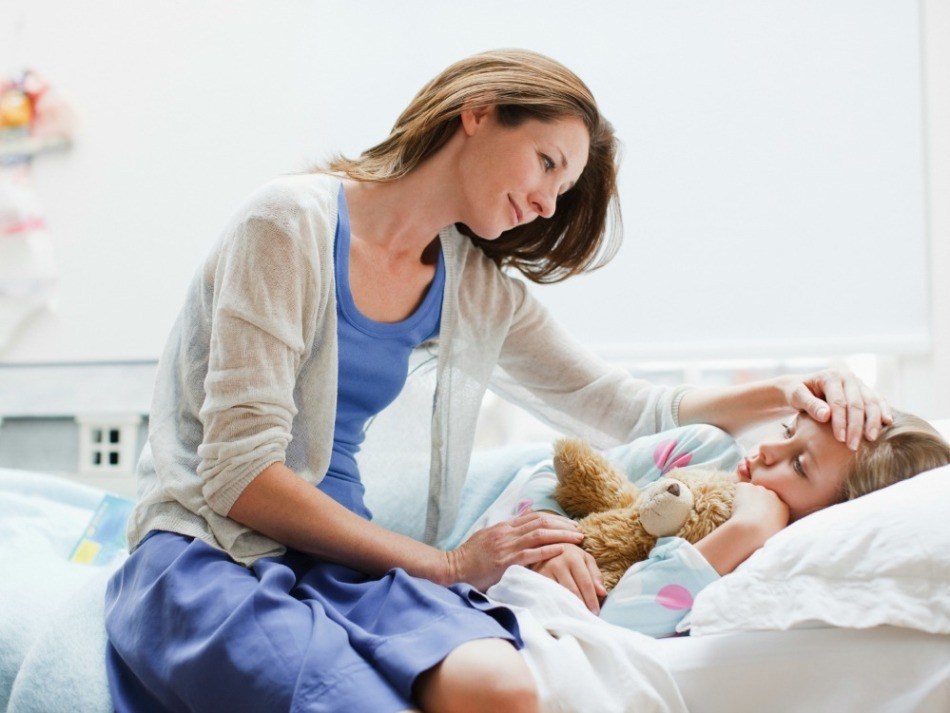 Mom at the bed of the child
Mom at the bed of the child - Unfortunately, there is another opinion that the angina does not need to be treated. The immune system will sooner or later cope with the pathogens of the disease and cleanse the body of them. That, by the same token, will lead to its strengthening. But, angina is quite serious. And if you do not help the body( especially children's), then this can lead to serious complications of
- . Moreover, it is by no means possible to treat the sore throat yourself. At the first symptoms of the disease you should immediately consult a specialist. Some types of sore throat are treated only in a stationary setting.
- You can put the correct diagnosis after taking a smear from the pharynx. The type of the causative agent of angina can be recognized by means of laboratory research. It is on the basis of his and the course of treatment is prescribed. Without tests it is impossible to correctly prescribe medicines
- It is impossible to treat viral or herpes angina with antibiotics. Such drugs suppress only pathogenic bacteria. Therefore, it is very important not to engage in self-medication, but to get qualified help from a doctor
- Before seeing a patient, a doctor should provide him with first aid. At the first symptoms of sore throat, you need to provide the child with bed rest and plenty of drink. High temperature should be brought down by antipyretic drugs. Indicated for angina inhalation
- A child over two years to relieve the pain in the throat need rinsing with a solution of furatsilina, chamomile or calendula
- Well helps in the initial stage of the disease dry heat around the neck. For this, an excellent vodka or semi-alcoholic compress. It should be kept in the submandibular area 2-3 times a day. If the child is strongly sick with lymph nodes, then you can use a compress with dimecid( 1: 3) or furatsilinom( 1: 5)
- In order to cope with angina, an integrated approach is needed. It is necessary to treat not only inflamed tonsils, but also to help the whole organism. Very often a doctor can prescribe a child antibiotics in tablets or capsules
- With improper treatment( or self-treatment), angina can manifest itself repeatedly. Wrong treatment can not only slow the course of the disease, but also weaken the body.
- . It's impossible to cope with a recurrent angina alone. If it manifested itself, it already indicates that all the procedures used before were ineffective. And often did not carry any positive effect. If the illness is protracted, then this is the main reason to show the child to a specialist
. What antibiotics should I give a child with a sore throat?
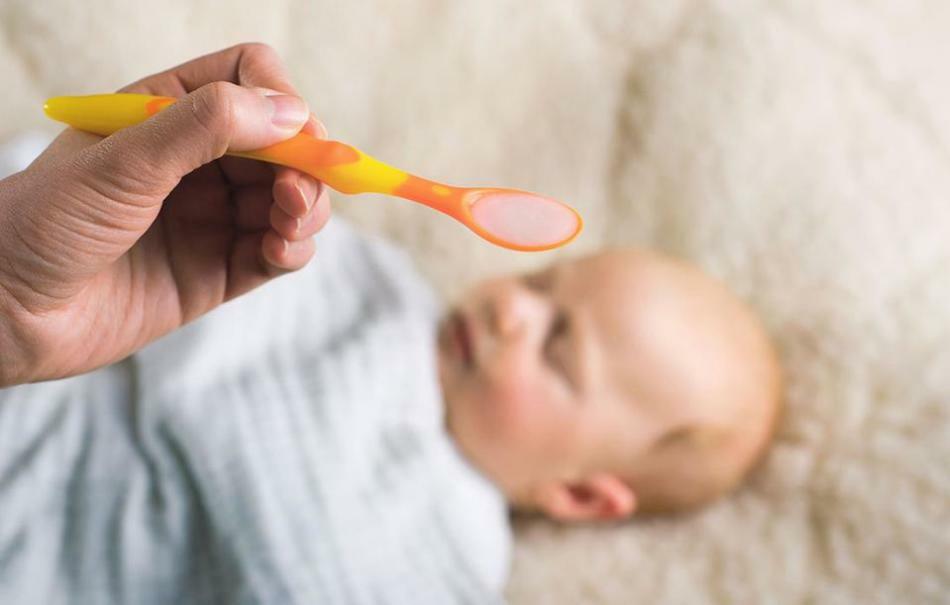 Antibiotics for a child
Antibiotics for a child - As mentioned above, not all types of angina are treated with antibiotics. Therefore, before taking such medications you need an accurate diagnosis. And it can only be supplied by specialist
- Antibiotics are prescribed for angina caused by bacterial pathogens. Most often they become streptococcus. In addition, antibiotics are indicated to reduce the risk of complications caused by this disease.
- . Usually, the doctor prescribes antibiotics without hesitation if there is a high temperature( 38 degrees) for more than three days and there is no runny nose and cough. The appointment of antibiotics for other symptoms is possible only after the analysis of
IMPORTANT: In children, often, angina caused by streptococcus may be similar to scarlet fever. Especially in the initial phase. If there is a suspicion of scarlet fever, the doctor prescribes antibiotic therapy to treat this disease.
- To treat bacterial sore throat with antibiotics begin with the simplest preparations of penicillin series. They are available in tablets, capsules, suspensions and other forms that are convenient for children. Such antibiotics include amoxicillin or ampicillin
- If these drugs are ineffective or if they can not be taken, macrolides are prescribed. These drugs are low-toxic drugs that suppress a large number of species of bacteria
- The course of antibiotics is usually designed for 5 days. But, the doctor can prolong their reception a few more days. Finish taking antibiotics only after the completion of the course. If relief comes before the end of the course, you can not drop the drugs. Exclusion can only be strong drugs. Such as "Summamed"
IMPORTANT: It is important for children up to one year to combine antibiotics with probiotics, which protects the microflora before the end of the formed intestine.
Treatment of purulent sore throat in a child is medically
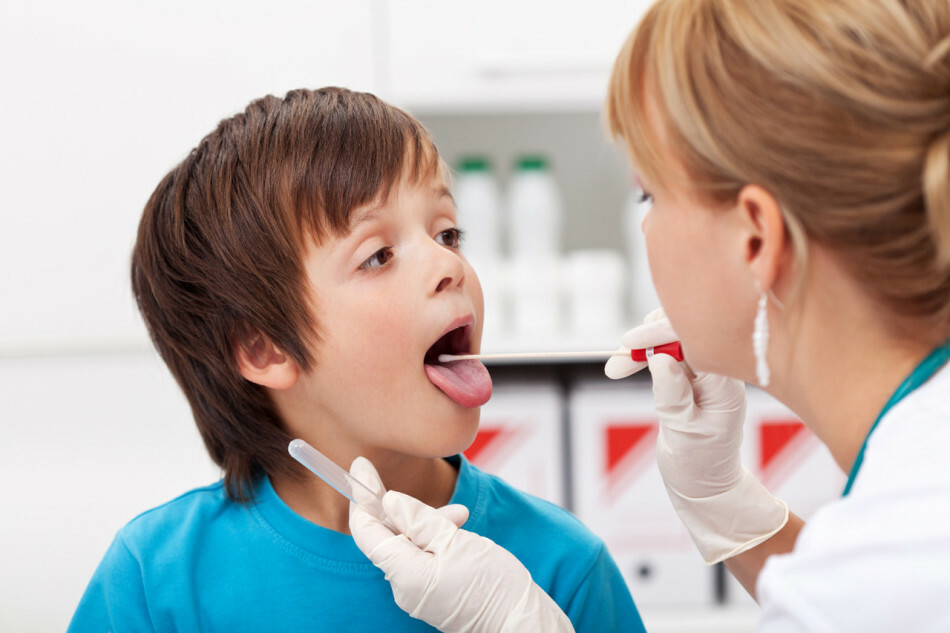 On examination with a doctor
On examination with a doctor - To purulent sore throat, several types of this disease are characterized by the presence of pus in the tonsils or near them. Such a disease is manifested by a sharp increase in temperature, chills and even febrile convulsions.
- . If the hands and feet of the child are cold, and the body temperature is above 37.5 degrees, then it is necessary to combine the antipyretic drug with Noshpa( 1/2 tablet).Included in this drug drotaverin will help reduce vasospasm and distribute the heat throughout the body.
- When diagnosing purulent sore throat, it is necessary to provide the child with bed rest. With its help you can avoid complications. Also shown is a warm plentiful drink. Eat during this disease you need warm, not thick food. From spices and hot sauces it is necessary to refuse
IMPORTANT: Purulent angina, transferred in childhood, often becomes the cause of chronic tonsillitis and can affect the work of the cardiovascular system and the kidneys. In order to avoid this problem, it is important to properly treat this type of disease.
- Children are more likely to tolerate purulent sore throat than adults. When the body temperature rises to 37.5 degrees, such an angina should be treated with antibiotics. But you need to know that if such a disease has already been treated with some kind of antibiotic( eg, "Augmentin"), then with a second disease you need to look for another drug of this kind. This will help to avoid the bacterial strain getting used to the antibiotic
- . It is possible to help antibiotics of the general spectrum with the help of drugs that have a local effect. For children, Bioparox is the best remedy. With purulent sore throat, you can not use the means with which you need to cover the inflamed tonsils
Unfortunately, such a popular procedure as gargling with purulent sore throat is almost useless.
Treatment of fungal sore throat in a child with pills and injections
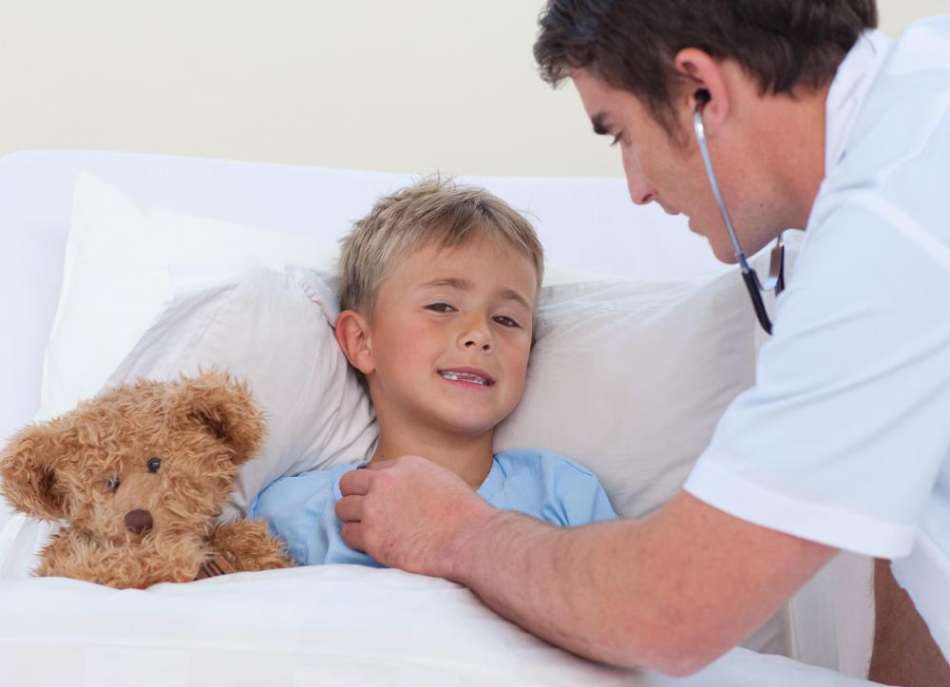 Doctor examines a small child
Doctor examines a small child Fungi of the genus Candida albicans become the causative agents of fungal angina. Children with this kind of angina rarely get sick. But, if this type of disease is diagnosed, then antibiotics of general and local action should be prescribed for treatment. These drugs include:
- "Hinozole"
- "Lévorin"
- "Nystatin"
If the child has taken antibacterial antibiotics, then they should be abandoned.
A greater effect in the treatment of fungal angina can be achieved if, along with the above antibiotics, take vitamins C, K and group B.
In addition, it is important in this type of angina to lubricate the tonsils with a solution of Methyl Blue( 2%) or Brilliant Green( 1%)
With a protracted nature of fungal angina, surgery may be required.
Treatment of mononucleic angina in children medically
- Infectious mononucleosis is transmitted as a result of close contact with the causative agent of the disease. After infection, the virus can be kept without signs of activity for up to 8 weeks. Most often this disease affects people aged 10 to 30 years. In young children, "atypical" mononucleosis can develop. Its symptoms are similar to those of the common cold
- Diagnosis of this disease is possible only by laboratory methods. Especially if the child is sick. As a rule, mononucleosis is characterized by high fever( up to 40 degrees), enlarged lymph nodes, nasal congestion, general malaise and korepodobnoy rash. The last symptom is characteristic, first of all, for children
- . At a high temperature accompanying this disease, the reception of antipyretic drugs is indicated. In this case, aspirin-containing drugs in the treatment of this disease should be excluded. It is also necessary to provide the child with an abundant drink. To clean the nose, you need to take vasodilating drops: "Nazivin" or "Otryvin"
- Antibacterial agents may be prescribed for the treatment of mononucleosis. But, only in the event that the presence of a bacterial infection accompanying this disease is proved. These can be preparations of a group of macrolides or cephalosporins. When developing allergic reactions, antihistamines
- may be prescribed. In severe cases( especially with airway obstruction) in hospital, glucocorticoid hormone therapy( for example, Prednisolone) is administered.
Treatment of catarrhal sinus in children
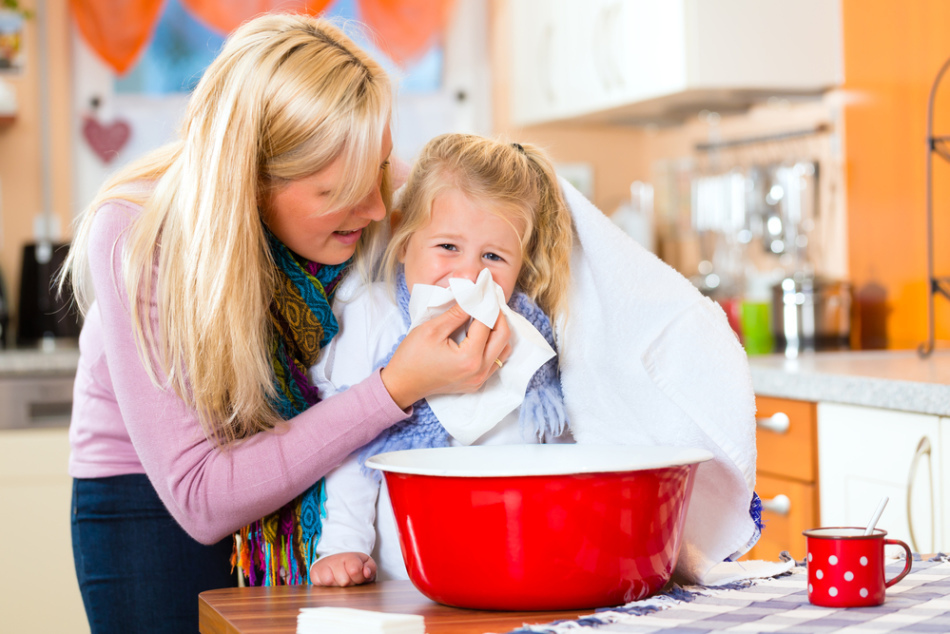 Inhalation against angina
Inhalation against angina - Treatment of this disease in children occurs on the basis ofantibiotics. They are appointed by the doctor after examination or obtaining results of the analysis of swabs from the throat. Catarrhal angina treated complex. Combined with antibiotics, antimicrobial topical preparations should be used. With the treatment of sore throats with syrups, sprays, rinse solutions, you can reduce swelling and pain
- To reduce the likelihood of complications, a sick child needs to be more often in bed. Eat necessary liquid broths, cereals and healthy drinks. Such as honey and milk. Gargle gargle best with a solution of potassium permanganate, Furacilin, or infusion of chamomile
- If the inflammation of the submaxillary or cervical lymph nodes shows compresses at night. In the afternoon, you need to do a warm bandage around the neck
- Very good help for the treatment of catarrhalic tonsillitis is steam inhalation and washing of the nasal sinuses with salt water( 1%).The same solution can gargle. For greater effectiveness, you can add such drugs as "Nima", "Nystatin Powder" or Colloidal Silver
. As a preventive measure of this type of angina, you need a vitamin diet and regular exercise.
Tablets and injections from herpetic sore throat
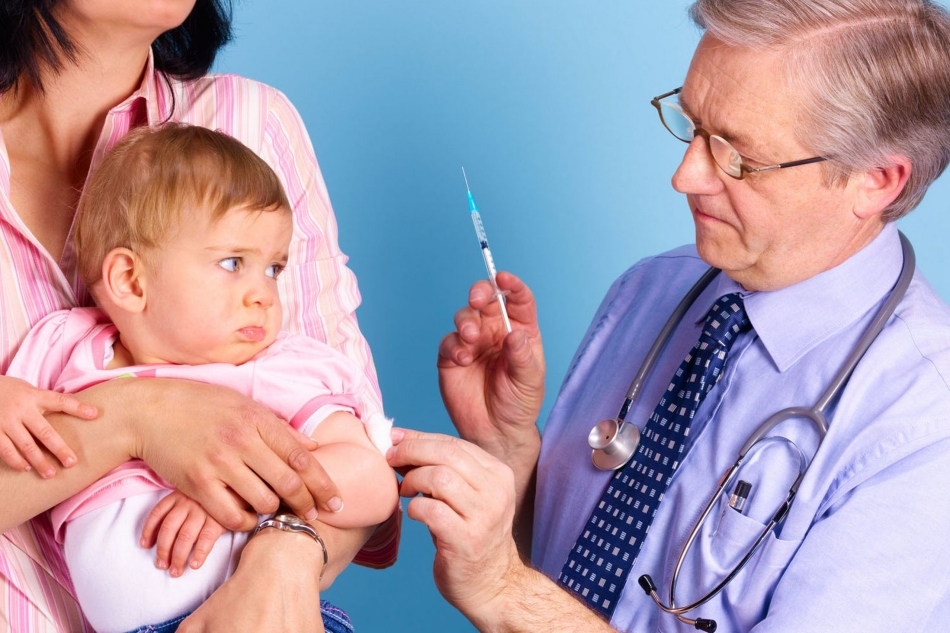 Injections from sore throat
Injections from sore throat - To treat herpetic sore throat with antibiotics is useless. They are powerless before the virus, the causative agent of the disease. Unfortunately, it may take time to make an accurate diagnosis. With herpetic sore throat, the child must be isolated. Quarantine can last up to 2 weeks.
- Treat this angina with anti-viral, anti-inflammatory and antihistaminic hyposensitizing drugs. Children are best suited for such preparations in the form of candles, ointments and solutions
IMPORTANT: To prevent the child's organism from being subjected to a secondary infection in herpetic sore throat, it is necessary to use throat rinses and tonsil treatment with Lugol( for iodine allergy it can not be used).
- You can wash the neck with children with the help of decoctions and infusions of chamomile, sage, St. John's wort, calendula, furacilin, salt, etc. If a child can not gargle because of age, then he can be helped by injecting a solution through a syringe without a needle.
- . To knock down the temperature with such a sore throat is necessary when the body rises above 38 degrees. For children, antipyretic agents based on Paracetamol and Ibuprofen
- are most effective in this disease. It is important to help immunity in this disease. For this, you need to take vitamin complexes and immunomodulating medications. Since the foci of inflammation in herpeticia sore throat can heal for a very long time using procedures such as ultrasound of the nasopharynx and the action of the helium-neon laser
. How to cure various types of children's sore throat medication: advice and feedback
Olesya. At the first symptoms of angina forward to the doctor. You should not self-medicate yourself and make your own diagnosis. Even within this disease, there are many varieties requiring different treatments. And the "angina" can "mask".
Irina. Angina can be viral or bacterial. But, in any case, for its treatment, and even more so for prevention, you can use honey. This beekeeping product can destroy streptococci. That is, the causative agent of all types of angina. But, it has a lot of allergens. Remember this.
